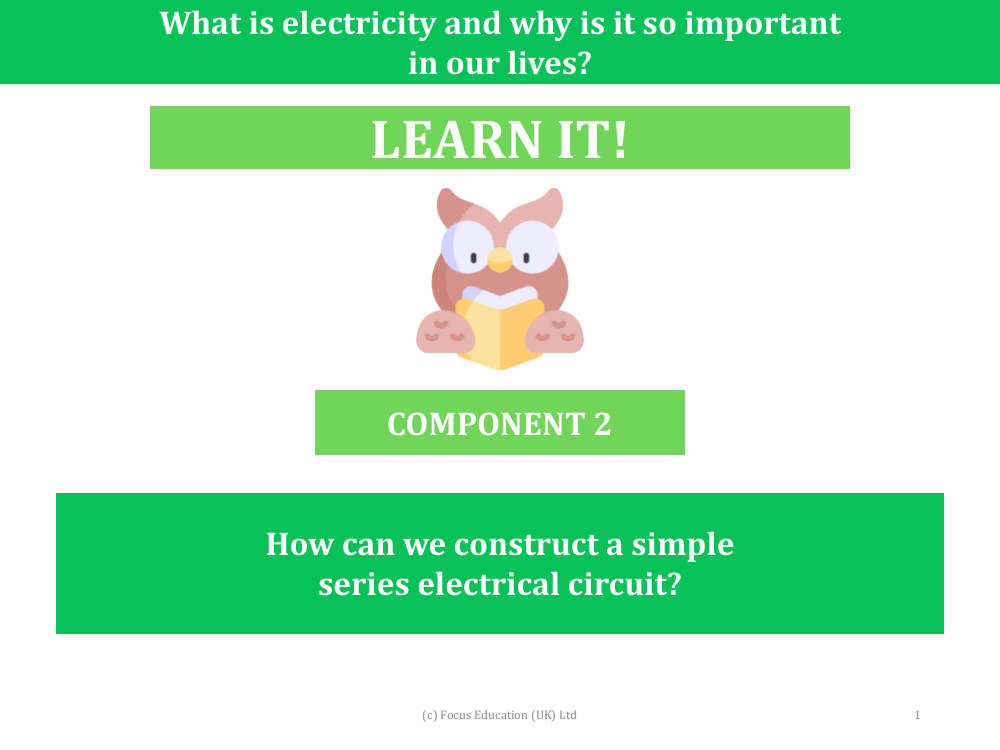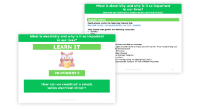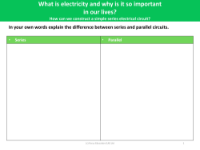How can we construct a simple series electrical circuit? - Presentation

Science Resource Description
Constructing a simple series electrical circuit is an engaging and educational activity that helps us understand the fundamentals of electricity, which is a crucial part of our modern lives. To begin, one would need a collection of basic components: a battery, wires, a light bulb, a switch, and a buzzer. The initial step involves connecting these elements in a series, meaning that the components are arranged in a single path for the electric current to flow. The battery serves as the power source, wires conduct the current, the bulb emits light when the current passes through, and the switch controls the flow of electricity within the circuit.
Once the basic circuit is set up to light the bulb, further experimentation can be conducted. Pupils can modify the circuit to include a buzzer, which will sound when the circuit is complete. They can also investigate how to make the light bulb shine brighter, which might involve using bulbs with different specifications or altering the circuit design. Additionally, incorporating a switch into the circuit allows one to control whether the bulb is lit or the buzzer sounds. After constructing the various circuits, pupils are encouraged to document their findings, using proper electrical symbols to create diagrams of their circuits. Understanding the difference between series and parallel circuits is also part of the learning process, with series circuits having only one path for the current and parallel circuits having multiple paths.



